10 Must-Visit Tourist Places In Italy
By: Priyanka Maheshwari Mon, 01 July 2024 6:59:25

Italy, with its rich history, stunning architecture, delectable cuisine, and breathtaking landscapes, is a dream destination for travelers from around the world. From the romantic canals of Venice to the ancient ruins of Rome, the country offers a plethora of iconic tourist spots to explore. If you're planning a trip to Italy, here are 10 must-visit tourist places that should be on your travel itinerary:
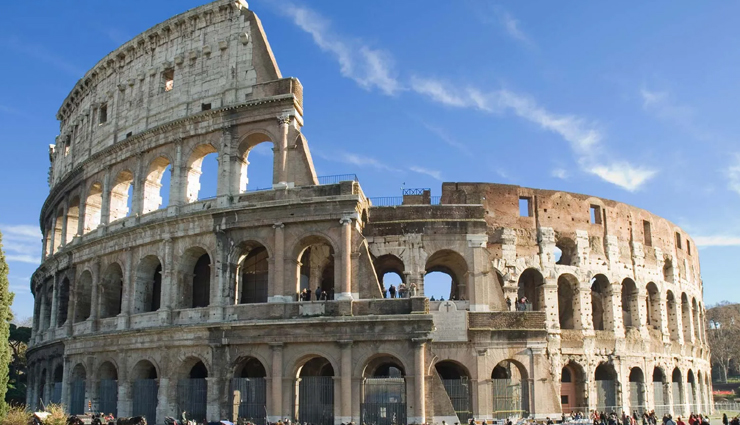
# The Colosseum, Rome
The Colosseum, known as the Flavian Amphitheatre, stands proudly in the heart of Rome, Italy, as a remarkable and ancient landmark. This awe-inspiring amphitheater is a testament to the architectural brilliance and grandeur of ancient Rome, attracting visitors from all corners of the world with its imposing structure and rich historical significance.
Initiated in AD 72 under the rule of Emperor Vespasian and completed in AD 80 during the reign of his son Titus, the Colosseum was a gift to the Roman people. It served as a magnificent venue for a variety of public spectacles and entertainment events, most notably gladiator contests and thrilling wild animal hunts. These captivating events were organized to entertain the Roman citizens and showcase the might and splendor of the Roman Empire.
Designed to accommodate an immense audience, the Colosseum's seating capacity is estimated to have ranged from 50,000 to 80,000 spectators. It was a marvel of its time, featuring a massive elliptical structure with four tiers and a sophisticated network of tunnels and trapdoors beneath the arena floor. Adorned with statues and intricate reliefs on its exterior, the Colosseum exhibited the artistic talent and craftsmanship of ancient Rome.
The gladiatorial contests held within the Colosseum were intense and brutal, pitting trained fighters against each other or fearsome animals. These spectacles were often accompanied by lavish displays and special effects to captivate the audience. The Colosseum played a significant role in Roman culture and politics, symbolizing the emperor's power and representing the magnificence of the Roman Empire.
Throughout the centuries, the Colosseum has witnessed various modifications and endured natural disasters such as earthquakes and fires, which caused substantial damage to the structure. Nevertheless, the Colosseum remained an enduring symbol of Rome's heritage and continued to draw visitors from all over the globe.
In modern times, the Colosseum stands as an archaeological marvel and holds the esteemed designation of a UNESCO World Heritage Site. It serves as a living testament to the brilliance and expertise of ancient Roman engineering, providing visitors with a glimpse into the rich history and culture of one of the world's greatest civilizations. Today, the Colosseum is one of the most popular tourist destinations, captivating millions of visitors who are entranced by its majestic beauty and the incredible stories it carries within its ancient walls. As a symbol of Rome's glorious past, the Colosseum remains an endless source of inspiration and wonder, beckoning all who visit to journey back in time and be enchanted by the legacy of ancient Rome.
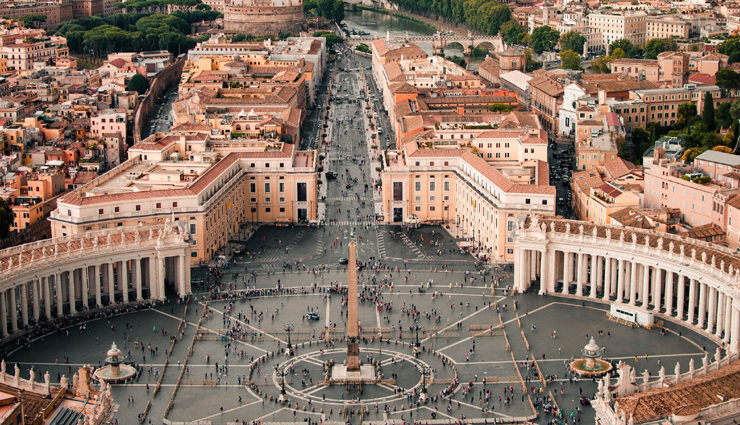
# The Vatican City, Rome
The Vatican City stands as one of the world's most exceptional and historically significant destinations. As the smallest independent state globally and the spiritual heart of the Roman Catholic Church, this sovereign city-state holds immense religious and cultural significance, attracting millions of visitors and pilgrims from every corner of the globe.
Serving as the spiritual home of the Roman Catholic Church, the Vatican City is the residence of the Pope, the esteemed leader of the Catholic Church and head of state. It is here that essential religious ceremonies, papal audiences, and significant events take place, drawing Catholics and visitors alike to partake in these sacred moments.
At the heart of the Vatican City stands the awe-inspiring St. Peter's Basilica, a world-renowned masterpiece of Renaissance architecture. Adorned with intricate artwork and crowned by Michelangelo's iconic dome, the basilica stands as a testament to human ingenuity and devotion. The grandeur of St. Peter's Square, with its majestic colonnades and soaring obelisk, further adds to the sense of wonder within the Vatican City.
Among the most coveted attractions in this holy enclave are the Vatican Museums, home to an unparalleled collection of art and artifacts amassed over centuries by the popes. Within these hallowed halls lies the awe-inspiring Sistine Chapel, where Michelangelo's legendary frescoes, including the iconic ceiling and the Last Judgment, elicit wonder and admiration.
Beyond its religious significance, the Vatican City serves as a beacon of art, culture, and history. Its buildings, monuments, and priceless artworks weave a tapestry of human creativity spanning different epochs of time.
As a place of pilgrimage and spiritual reflection for Catholics, the Vatican City also captivates visitors from diverse backgrounds and beliefs. Its art, history, and the chance to witness humanity's most magnificent creations enthrall all who have the privilege of setting foot in this sacred realm.
With its profound religious importance, breathtaking architecture, and artistic masterpieces, the Vatican City remains an unparalleled destination that continues to leave an indelible mark on the hearts of all who are fortunate enough to visit. It stands as a timeless testament to faith, creativity, and human achievement, inviting the world to partake in its enduring legacy.
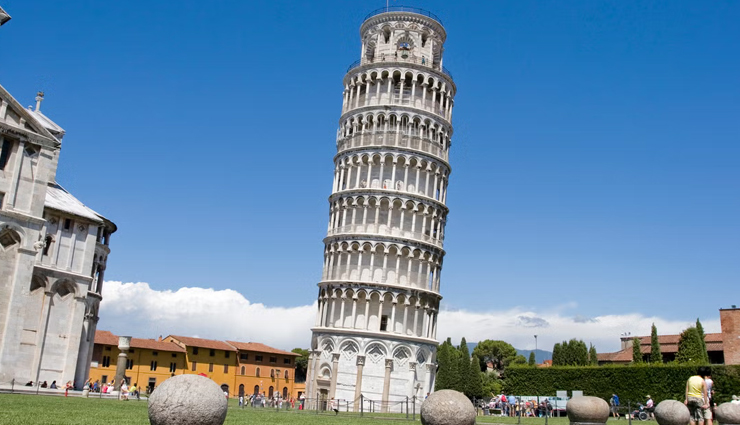
# The Leaning Tower of Pisa, Pisa
Situated in the captivating city of Pisa, Italy, the Leaning Tower of Pisa stands as one of the world's most renowned and instantly recognizable landmarks. Its distinctive tilt has captivated the imaginations of travelers and history enthusiasts alike for centuries.
The tower's construction commenced in 1173, originally intended as a bell tower for the adjacent Pisa Cathedral. However, the soft ground beneath its foundation caused the tower to lean during its construction. Despite various attempts to correct the tilt over the years, it only served to enhance its unique characteristic.
Soaring to approximately 56 meters (185 feet) in height, the Leaning Tower of Pisa boasts an exquisite design adorned with graceful columns, elegant arches, and intricate marble reliefs. Combining Romanesque and Gothic architectural styles, the tower showcases a remarkable blend of artistic influences. Inside its bell chamber, seven melodious bells have rung out for centuries, adding a delightful charm to this awe-inspiring structure.
The tower's enigmatic lean, resulting from the uneven settling of its foundation, has turned it into a marvel of engineering and a symbol of human resilience. Despite the tilt, the tower has gracefully endured for over 800 years, a testament to the ingenuity of its medieval architects.
Travelers from all corners of the globe make a pilgrimage to Pisa to witness and pose for the iconic photographs seemingly holding up or pushing over the Leaning Tower. The picturesque Campo dei Miracoli, also known as the Piazza dei Miracoli, where the tower is situated, features not only the tower itself but also the magnificent Pisa Cathedral, the Baptistry, and the Camposanto Monumentale, adding to the allure of this historical site.
In recognition of its cultural and historical significance, the Leaning Tower of Pisa earned the prestigious UNESCO World Heritage Site status in 1987. Throughout the years, numerous restoration efforts have been diligently undertaken to ensure the preservation of this beloved landmark for generations to come.
As a symbol of human ambition, architectural brilliance, and the ability to triumph over challenges, the Leaning Tower of Pisa continues to inspire wonder and fascination. Its distinctive tilt and storied past invite travelers and history aficionados to immerse themselves in its magnificent legacy within the charming city of Pisa, Italy.
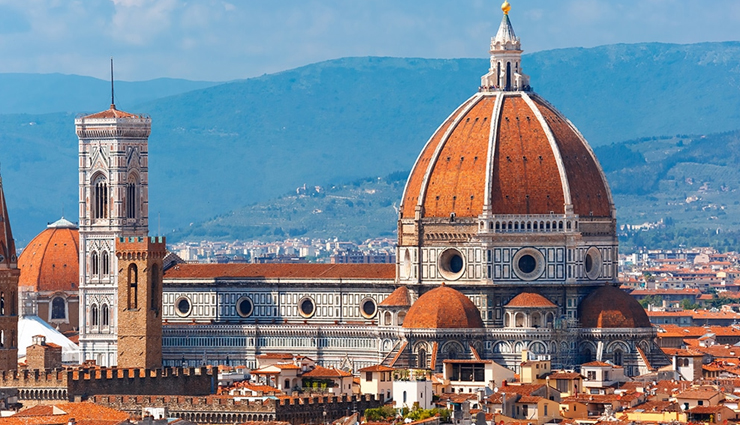
# Florence Cathedral (Duomo), Florence
The Florence Cathedral, known as the Duomo, stands as a magnificent architectural wonder and an embodiment of Renaissance opulence nestled in the captivating city of Florence, Italy. Dominating the city's skyline, this splendid cathedral has become one of Italy's most sought-after and admired landmarks.
Dating back to 1296, the construction of the Florence Cathedral began under the skilled guidance of architect Arnolfo di Cambio. As the centuries passed, various esteemed architects and artists, including Filippo Brunelleschi, Giotto, and Andrea Pisano, contributed their genius to its design and construction. The crowning glory of the cathedral is Brunelleschi's ingenious dome, a feat of engineering brilliance that has since become an iconic symbol of Florence.
Adorned with intricate white, pink, and green marble, the facade of the Florence Cathedral showcases a harmonious fusion of Gothic and Renaissance architectural styles. Beside the cathedral stands the remarkable Giotto's Campanile, a majestic bell tower that stands as another awe-inspiring example of Florentine artistry.
Stepping inside the Florence Cathedral, visitors are treated to a breathtaking interior adorned with soaring vaulted ceilings, exquisite stained glass windows, and intricate frescoes adorning the walls and dome. At the heart of the cathedral lies the magnificent high altar, adorned with a captivating marble sculpture depicting the Assumption of the Virgin Mary.
Of all the wonders that captivate visitors, the vast frescoed dome designed by Brunelleschi stands out as one of the most celebrated features of the Florence Cathedral. Climbing to the top of the dome provides a mesmerizing panoramic view of Florence and the surrounding Tuscan countryside, an experience that leaves a lasting impression on every traveler.
Adjacent to the cathedral, the Baptistery of Saint John stands as another architectural gem, gracing the cathedral square with its elegance. The bronze doors of the baptistery, particularly the renowned Gates of Paradise crafted by Lorenzo Ghiberti, exemplify the finesse of Renaissance artistry.
Throughout its rich history, the Florence Cathedral has played a profound role in the city's cultural and religious life, hosting significant religious ceremonies, civic events, and jubilant celebrations. Today, it continues to be a sacred place of worship and a cherished symbol of Florence's vibrant cultural heritage.
Recognized as a UNESCO World Heritage Site, the Florence Cathedral stands as an enduring testament to the artistic brilliance of the Renaissance era. Drawing millions of visitors from around the globe, the cathedral's allure lies not only in its beauty and historical significance but also in the profound sense of devotion and creativity it embodies. As you step foot into this extraordinary architectural treasure at the heart of Florence, Italy, you embark on a journey that will leave you enchanted and inspired by the enduring legacy of human ingenuity and unwavering devotion.
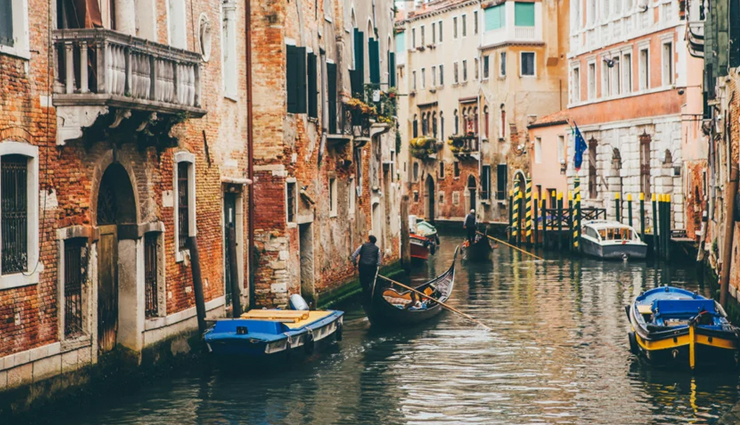
# Venice Canals, Venice
The Venice Canals, nestled within the captivating city of Venice, Italy, stand as a globally acclaimed and enchanting network of waterways. Revered for their matchless allure and picturesque charm, these canals have seamlessly woven themselves into the fabric of Venice's identity, playing a pivotal role in the city's illustrious history and cultural heritage.
Venice, an archipelago comprising 118 small islands, is intricately interconnected by a labyrinthine system of canals. Serving as both passageways and thoroughfares, these watercourses have replaced conventional roads, rendering boats an indispensable mode of transportation in this resplendent "Floating City."
The Grand Canal, Venice's principal waterway, elegantly winds its way through the heart of the city, graced by magnificent palaces, historic edifices, and alluring Venetian abodes. An architectural marvel, the Rialto Bridge spans the Grand Canal, offering a splendid vantage point to behold the vibrant water traffic below.
Beyond the Grand Canal, a myriad of smaller canals crisscross the cityscape, forming an enchanting and intricate tapestry of waterways. Embarking on a leisurely journey along these intimate canals aboard a gondola, water taxi, or vaporetto (water bus) allows travelers to submerge themselves in the romantic and idyllic ambiance that is distinctly Venetian.
The Venice Canals are not merely utilitarian conduits; they serve as the pulsating heart and vibrant soul of the city's cultural and social life. During festivals and events, Venetians congregate along the canals, infusing the air with melodious strains of music, vibrant expressions of art, and joyful revelry. Among these festivities, the annual Venetian Carnival stands in the limelight, bedazzling with its opulent masks and intricate costumes, establishing it as one of the world's most mesmerizing and unforgettable spectacles.
Lining the banks of the Venice Canals are architectural marvels that grace the city's skyline. Historic palaces, resplendent churches, and stately structures bear intricate designs, embodying the ingenuity of Venetian architecture. The city's innovative construction, supported by wooden pilings known as "pali," elevates its buildings above the waterline, showcasing the remarkable engineering prowess of the Venetians from bygone eras.
Undoubtedly, Venice faces challenges, grappling with the impact of rising water levels and the persistent specter of flooding, known as "aqua alta." Preserving the canals and carefully addressing environmental concerns remain of paramount importance in safeguarding this extraordinary cultural and historical treasure.
Enshrined as a UNESCO World Heritage Site, the Venice Canals serve as a testament to human creativity, resilience, and the harmonious blending of a city with its aquatic surroundings. Embracing the opportunity to explore the Venice Canals grants travelers passage to a realm of timeless elegance and enchantment, where shimmering waters and splendid architecture unite to orchestrate a symphony of wonder and awe. Peerless and captivating, a voyage along these magical canals unveils an intimate glimpse into the very essence of Venice—a city of enduring allure and singular charm.
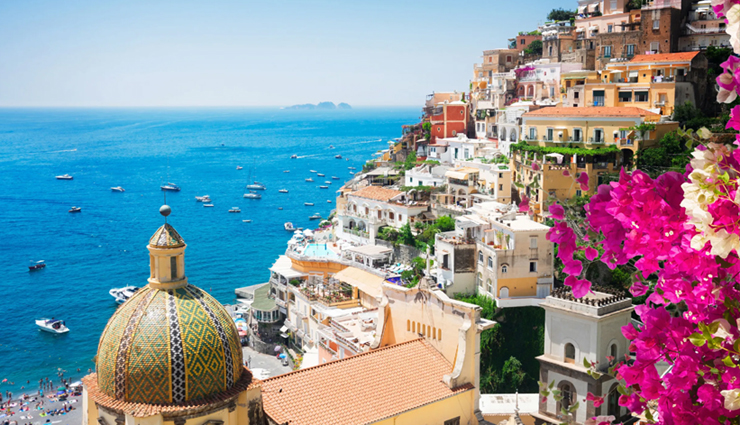
# Amalfi Coast, Campania
The Amalfi Coast, nestled in the picturesque region of Campania, Italy, is an enchanting and awe-inspiring coastal stretch celebrated for its sheer beauty, delightful towns, and dramatic landscapes. As a designated UNESCO World Heritage Site, this captivating destination has been a source of fascination for travelers and artists for centuries, offering a haven of natural wonders and cultural gems.
Located along the southern edge of the Sorrentine Peninsula, the Amalfi Coast stretches approximately 50 kilometers (30 miles) and is bordered by the Tyrrhenian Sea on one side and majestic cliffs on the other. The rugged coastline is adorned with terraced vineyards, fragrant lemon groves, and pastel-hued fishing villages that artfully cling to the cliffs, showcasing the ingenuity of human craftsmanship.
Beyond its breathtaking geography, the allure of the Amalfi Coast lies in the charming towns and villages, each with its own distinct character and appeal. The town of Amalfi, from which the coast takes its name, once flourished as a maritime powerhouse during the Middle Ages. Today, it boasts a stunning cathedral and a maze of meandering alleys leading to hidden squares. Positano, with its picturesque cascade of pastel-colored houses, is a postcard-perfect destination cherished for its idyllic beaches and upscale boutiques. Ravello, perched high above the coast, offers spellbinding vistas of the sea and is renowned for its enchanting gardens and historic villas.
The Amalfi Coast's idyllic climate and fertile land have given rise to a rich culinary heritage. The region is famed for its delectable cuisine, featuring fresh seafood, locally produced olive oil, and the world-renowned Amalfi lemons, which are used to create the delightful limoncello liqueur.
Nature enthusiasts are invited to explore the diverse landscapes of the Amalfi Coast. Hiking trails wind through lemon terraces and lush forests, rewarding adventurers with sweeping views of the coastline and azure waters below. Boat excursions offer the opportunity to discover hidden coves, grottoes, and charming fishing villages accessible only from the sea.
The Amalfi Coast's rich history and cultural significance are palpable throughout the region. Ancient watchtowers and defense fortresses dot the coastline, bearing witness to the region's maritime past. Art galleries, music festivals, and performances hosted in delightful venues celebrate the area's artistic heritage.
Beyond its sun-kissed beaches and awe-inspiring vistas, the Amalfi Coast captures the hearts of all who visit. The harmonious fusion of natural beauty, ancient traditions, and timeless charm creates an enchanting destination, enticing travelers to embark on an unforgettable journey through this coastal paradise in Campania, Italy.

# Cinque Terre, Liguria
Nestled within the picturesque region of Liguria, Italy, lies the enchanting coastal destination of Cinque Terre, a breathtaking and idyllic haven that has captured the hearts of travelers worldwide. Known as the "Five Lands," Cinque Terre comprises five charming fishing villages delicately perched along the rugged Italian Riviera coastline, each adding its own unique charm to this UNESCO World Heritage Site.
Monterosso al Mare, Vernazza, Corniglia, Manarola, and Riomaggiore each boast their own distinctive character, with their pastel-colored houses clinging to the cliffs, scenic harbors, and winding streets leading to secluded squares and panoramic viewpoints overlooking the azure Mediterranean Sea.
Beyond its stunning coastal beauty, Cinque Terre exudes an authentic and unspoiled ambiance, shaped by its remote and rugged location that preserved its traditional way of life and unique Ligurian culture. The local residents take immense pride in their fishing and agricultural heritage, cultivating vineyards and terraced gardens that yield the region's renowned wines and delectable produce.
Venturing through Cinque Terre is best experienced by trekking along the famous Sentiero Azzurro, or Blue Trail, which artfully connects all five villages. This captivating trail treats hikers to mesmerizing vistas of the sea, vineyards, and terraced landscapes, providing an intimate and immersive encounter with the region's natural splendor.
Cinque Terre is equally celebrated for its delectable cuisine, featuring the freshest seafood, pesto sauce crafted from locally grown basil, and homemade pasta. Visitors relish the flavors of traditional Ligurian dishes while savoring picturesque views of tranquil harbors or indulging in the warm hospitality of family-run trattorias.
The region's deep maritime heritage is proudly displayed through colorful fishing boats and vibrant festivals that celebrate the sea and local traditions. Festivals such as the Feast of the Madonna Bianca in Monterosso al Mare and the Feast of San Giovanni Battista in Riomaggiore showcase the region's cultural pride in lively and unforgettable displays.
Cinque Terre's charm extends to its commitment to sustainable tourism and preservation efforts. The Cinque Terre National Park safeguards the unique ecosystem and architectural integrity, ensuring that this coastal paradise remains an enchanting and authentic destination for generations to come.
Whether strolling through the charming streets of Vernazza, basking in the sun on Monterosso al Mare's beaches, or savoring a magical sunset from Manarola's clifftops, Cinque Terre is a place where time seems to stand still. Visitors are beckoned to immerse themselves in the beauty and tranquility of this extraordinary coastal gem, where the allure of its Ligurian heritage remains an ever-present invitation to explore and cherish the wonders of Cinque Terre in Liguria, Italy.
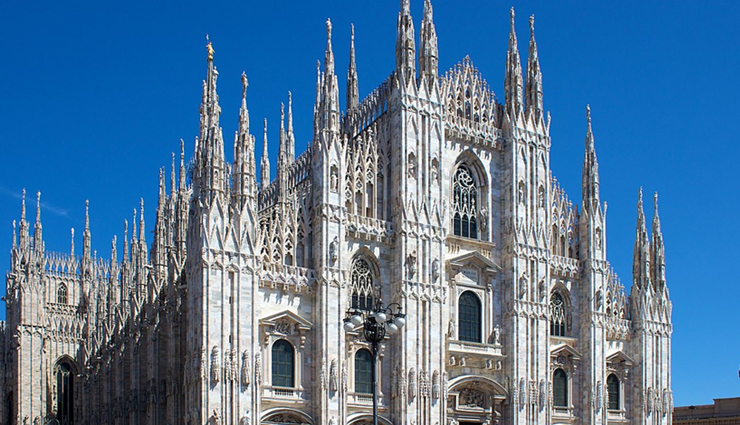
# Milan Cathedral (Duomo di Milano), Milan
The Milan Cathedral, known as the Duomo di Milano, stands as a captivating architectural masterpiece and an iconic symbol of Milan, Italy. Positioned in the heart of the city, this stunning Gothic cathedral is a testament to human ingenuity, craftsmanship, and religious reverence, captivating visitors from across the globe with its breathtaking beauty and historical significance.
The construction of the Milan Cathedral commenced in 1386 and spanned over six centuries, resulting in an intricate and ornate design. Adorned with thousands of marble statues, spires, and intricate details, the cathedral's facade presents a mesmerizing visual spectacle that showcases the brilliance of Gothic architecture.
Its most striking feature is the majestic spires and towers, with the tallest soaring over 350 feet in height. The pinnacle of the cathedral is crowned with a splendid golden statue of the Virgin Mary, affectionately known as the Madonnina, an enduring symbol of Milan's spiritual devotion.
Stepping inside the Milan Cathedral unveils a realm of artistic wonders. The interior boasts intricate stained glass windows, elaborate altars, and magnificent frescoes, each a testament to the exceptional craftsmanship and artistic talent of the Renaissance and Baroque periods.
A visit to the Milan Cathedral is not complete without ascending to the rooftop terrace, offering panoramic vistas of the city and an up-close encounter with the cathedral's remarkable spires and statues. The climb to the top is a memorable experience, rewarding visitors with a breathtaking perspective of Milan's skyline.
Beyond its architectural grandeur, the Milan Cathedral plays a pivotal role in the city's religious and cultural life. Hosting significant religious ceremonies, coronations, and historical events throughout the centuries, it has evolved into a symbol of Milanese pride and heritage.
The cathedral's significance extends beyond the realms of faith and culture. Serving as a hub of architectural inspiration, it has ignited the creativity of numerous artists, architects, and scholars across the ages. Its lasting legacy has left an indelible mark on the evolution of Gothic architecture and has inspired the creation of architectural marvels worldwide.
As one of the largest cathedrals globally, the Milan Cathedral holds the prestigious title of a UNESCO World Heritage Site, attracting travelers eager to immerse themselves in Milan's rich history, art, and spiritual essence. Standing as a timeless testament to human devotion and creativity, the Milan Cathedral beckons all who enter to marvel at the splendor of this majestic structure, which remains an enduring emblem of Milan's grandeur and cultural heritage.
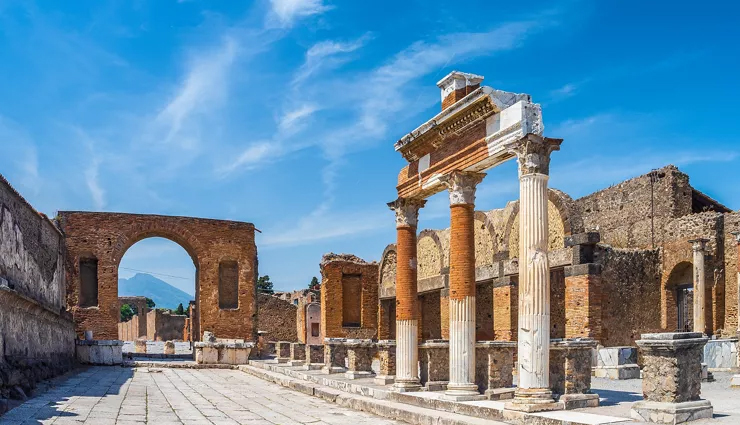
# Pompeii, Campania
Pompeii, located in the enchanting region of Campania, Italy, is an extraordinary archaeological site that offers a mesmerizing glimpse into the ancient past. This ancient Roman city was tragically buried under layers of volcanic ash and pumice when Mount Vesuvius erupted in AD 79, preserving its remains in a remarkable state of preservation for centuries.
Once a thriving and prosperous city, Pompeii was a bustling center of commerce, culture, and daily life during the Roman Empire. The city's streets were lined with grand villas, shops, public baths, and temples, showcasing the opulence and sophistication of Roman society.
The eruption of Mount Vesuvius on that fateful day in AD 79 was a cataclysmic event that engulfed Pompeii and its inhabitants in a deadly mix of ash, pumice, and hot gases. The volcanic ash rapidly solidified around the bodies of those who perished, leaving behind voids that were later filled with plaster during the excavation process. These plaster casts now stand as poignant and haunting reminders of the human tragedy that unfolded in Pompeii.
Rediscovered in the 18th century, Pompeii has been meticulously excavated and preserved, providing archaeologists and visitors alike with invaluable insights into Roman life nearly 2,000 years ago. Exploring the ruins of Pompeii is akin to stepping back in time, as visitors traverse its ancient streets, enter well-preserved houses, and marvel at the remains of once-majestic temples and theaters.
Some of the most impressive structures within Pompeii include the Forum, the social and political heart of the city; the Amphitheater, where gladiatorial contests and other spectacles took place; and the House of the Vettii, a lavish residence adorned with intricate frescoes and mosaics.
Pompeii's archaeological significance extends beyond its historical ruins. The city's excavation has also yielded a treasure trove of artifacts, including pottery, artwork, and everyday objects, which now reside in the Naples National Archaeological Museum and provide valuable insights into the daily life and customs of ancient Romans.
Today, Pompeii stands as a UNESCO World Heritage Site and one of Italy's most visited archaeological wonders. Its haunting beauty and historical significance draw millions of visitors each year, offering a profound and humbling experience as they bear witness to the enduring legacy of a civilization lost in time. A journey to Pompeii is not only a captivating adventure into the past but also a poignant reminder of the impermanence of human endeavors and the powerful forces of nature that shape our world.
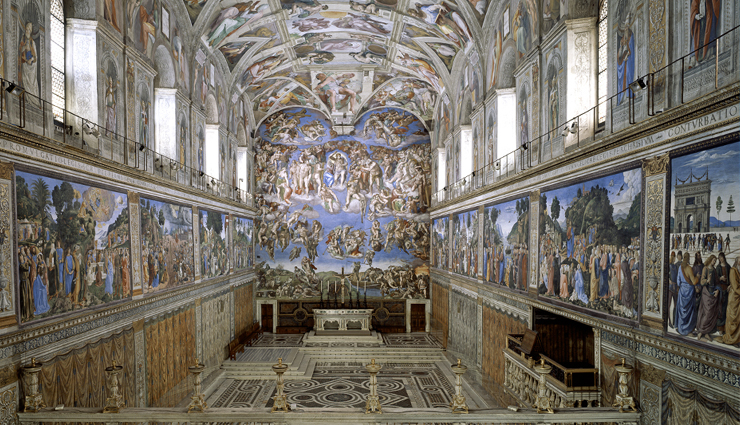
# Sistine Chapel, Vatican City
The Sistine Chapel, located within the Vatican City, is one of the world's most renowned and cherished artistic treasures. This iconic chapel stands as a pinnacle of Renaissance art and a symbol of the Vatican's cultural and spiritual significance.
Commissioned by Pope Sixtus IV in the late 15th century, the Sistine Chapel was intended to be the pope's private place of worship. However, it soon became a venue for important ceremonies, including papal elections and other religious events.
The chapel's interior is adorned with breathtaking frescoes that have been masterfully created by some of the greatest artists of the Renaissance era. The most famous of these frescoes, and perhaps one of the greatest artistic achievements in history, is the ceiling fresco painted by Michelangelo.
The centerpiece of the ceiling frescoes is "The Creation of Adam," a mesmerizing depiction of God giving life to Adam with their outstretched hands nearly touching. This iconic image has become an enduring symbol of divine inspiration and human potential.
The rest of the ceiling is a captivating display of biblical scenes, including stories from Genesis, which unfold like a grand narrative as visitors gaze upward. The mastery of Michelangelo's brushwork and his ability to create three-dimensional illusions on a flat surface have left an indelible mark on the history of art.
The Last Judgment, another monumental fresco painted by Michelangelo, adorns the altar wall of the Sistine Chapel. This powerful depiction of the final judgment has been the subject of admiration and contemplation for centuries.
Beyond Michelangelo's work, the Sistine Chapel is also adorned with frescoes by other notable artists of the time, including Perugino, Botticelli, and Ghirlandaio, each contributing to the chapel's rich artistic heritage.
The Sistine Chapel remains a place of spiritual significance and artistic wonder, drawing millions of visitors from around the globe each year. Its awe-inspiring beauty, the vibrancy of its colors, and the profound expressions of faith and humanity depicted on its walls continue to resonate with people of all backgrounds and beliefs.
As one of the Vatican's most sacred and cherished spaces, the Sistine Chapel stands as a testament to the enduring power of art to inspire, uplift, and connect people across time and cultures. Its preservation and ongoing conservation efforts ensure that future generations will have the privilege of experiencing the profound beauty and historical significance of this extraordinary masterpiece in the heart of the Vatican City.





